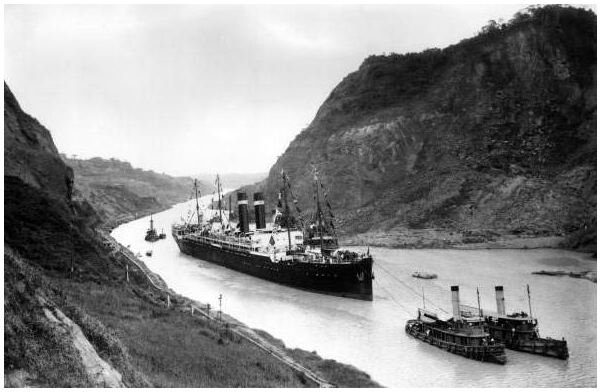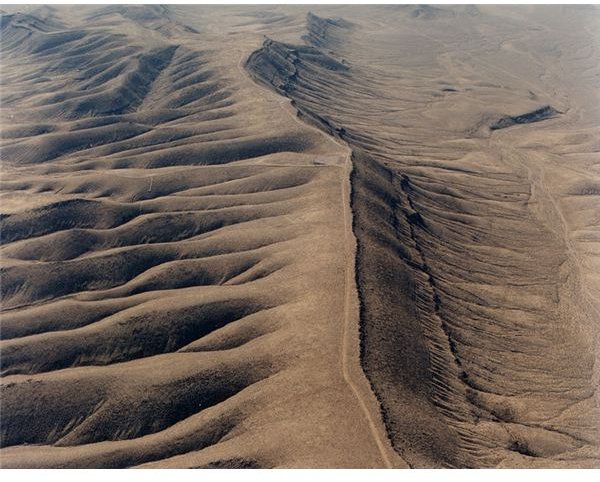Three Examples of Poor Risk Management: What Can We Learn From These Projects?
Learning From the Past
Today’s project leaders can learn from historical examples of risk management gone wrong. There are projects attempted and stopped when reality sunk in and leaders were forced to abandon their efforts. Then there are projects that do seem to find their way to the finish line but once they are finished, the failure to implement a good risk management plan turned these completed endeavors into disasters.
Here, we’ll take a look at three real-life examples of poor risk management, lessons learned and lessons overlooked.
Panama Canal

Theodore Roosevelt, famous for reviewing the attempts by the French to build the Panama Canal said of the project, “Americans learn only from catastrophe and not from experience.” While this statement isn’t true of every goal or milestone tackled by today’s management world, it definitely fits. And, Roosevelt learned a lot from the French failures.
The French attempts were the vision of businessman Ferdinand de Lesseps in the 1880s who wanted to call the canal “La Grande Tranchee” (the great trench). He thought the perfect design was already behind the French who were successful when constructing the Suez Canal. The problems started out relatively early with no risk management plan (or even blueprints) but de Lesseps charged forward anyway.
Mountain, jungles and a challenging terrain didn’t seem to scare de Lesseps’ efforts and by 1883, 20,000 workers only achieved a 10th of the 2,000,000 cubic meters of excavation work that needed to be completed. They were plagued with landslides by the lack of a good risk management plan. Workers piled dirt on each side of the excavation site which caused the muddy landscape to fall back into the trench, much to the dismay of the workers.
The year 1884 brought even more disaster with yellow fever and each day approximately 200 workers lost their lives to the contagious disease. By 1889, de Lesseps’ dream was trashed when additional funds couldn’t be raised and the project was abandoned.
In 1901, Theodore Roosevelt became interested in completing the canal (mostly because the U.S. Navy would be king of two oceans via the canal access). This time risk management was used, although it may not have been called “risk” management. This time the project had Walter Reed who was able to eradicate Yellow Fever by ridding the project area, worker’s dwellings and eating areas of the deadly mosquito, Stegomyia fasciata.
The U.S. canal efforts fell to many supervisors including various engineers and project leaders. One project leader, John Stevens, determined the best course of action would be to stop excavating all together while an infrastructure was built, so laborers on the project could work faster and more efficiently. By 1907, Army Colonel George W. Goethals was in charge and in 1914, the first ship, the Cristobal maneuvered through the canal with ease.
Although the Panama Canal took years of ideas and visions, the poor planning, disease, mud and landslides that plagued the French was finally overcome. Here, the canal was a success by those who stepped back and attacked the risks the French faced, and prioritized risks using good forethought. This is something all project managers must do to excel in any project set before them. “Digging” into a project without a scope and plan will turn your projects into a “Panama” disaster; avoid this by digging in and exploring risks first.
Yucca Mountain

Back in 1987, the U.S. Government chose Yucca Mountain located in Nevada (100 miles northwest of Las Vegas) as the perfect place for a nuclear waste depository. Actually, the State of Nevada, its politicians and citizens were not consulted when Congress gave the go-ahead. Nevada politicians and citizen protest groups fought back. The “not in my backyard” chant was common among Nevadans. Would tourism drop? Would the stored waste be safe and secure?
Still, the Bush Administration wanted to push on and gave the Department of Energy the nod to build even when it was discovered some of the research gathered showed falsified data when it came to the repository’s safe-keeping of nuclear waste.
This example of poor risk management involves the U.S Government not accounting for protest and opposition from Nevadans. Their attempts to use political power over scientific reality angered the state and for years, the debate charged by the Bush Administration was investigated, agreed to, stopped, restarted and finally in 2009, the Obama Administration scrapped the project.
Here, not only did the government turn a blind eye to opposition, they also managed to spend a little over $13 billion of taxpayer money on the project.
Much of the nuclear waste in the United States is stored onsite at nuclear plants in above ground containers and in hindsight, the politicians in Washington who forced an unwanted nuclear repository on citizens who didn’t want it turned into a disaster, both a monetary and embarrassing one for those who supported the project.
Even governments can learn from the power of protest and some say this dilemma for Nevada became part of Barack Obama’s campaign path—or his opposition to it. If a project seems controversial, your best bet is to explore the potential risks associated with the project to see if they are so vast it’s not a good idea to proceed. On the other hand, if the U.S. Government would have taken steps to ensure the scientific data was accurate instead of dismissing inaccurate data the project could have either been reevaluated for safety or pitched out altogether. It’s funny how governments often skip the risk prioritizing and go full steam ahead when a little planning would have saved billions and the unrest of the people living in the great State of Nevada.
Bank of America

If you think a little research into what could go wrong on a project is a waste of time, just look at Bank of America (BofA). When this big bank decided it would begin to charge customers $5 per month in 2012 just to gain access to their funds via their debit cards, the opposition was far greater than they ever imagined.
Sure, this financial conglomerate may have thought it would easily overcome some initial angry customers and that most wouldn’t take the time to change banks—who has the time, who wants the hassle so to speak? This proved to be a horrible mistake on the part of BofA.
BofA couldn’t deny two major dates in November of 2011—Dump Your Bank Day and Bank Transfer Day, both started by ordinary citizens protesting the debit card charge.
Back in October of 2011, after BofA announced the new fee, a poll by TheStreet showed a whopping 83 percent of BofA customers said they would indeed take the time out of their busy schedules and dump BofA.
Opposition from customers was widely from Bank Transfer Day (November 5, 2011) started by Kristen Christian, who created the “Day” via a Facebook venue. Dump Your Bank Day (November 8, 2011) followed thereafter from Occupy Wall Street protesters.
Credit unions shouted with glee as thousands of folks did indeed “dump” BofA, even though the conglomerate tried to sway this from happening by announcing on November 1, 2011 they had rethought the plan and would not be charging its customers the $5 debit card fee. A little too late, BofA!
In a time when every American looks at each and every dollar and how these dollars are being spent, this was a poor idea by BofA. Five dollars to be allowed to use your own money angered too many and the announcement to drop the charge coming too late, did cause people to bail on BofA.
What if BofA would have considered what the average customer would do? Would they have seen the negativity and dumped the idea? Or, would they have surged ahead with the idea? BofA won’t say, but it does seem a little risk management planning here would have saved BofA some real bad press and a lot of customer loss.
Risky Business
Risk management is something all project leaders, teams and stakeholders need to delve into during project initiation. As seen with these three examples, when risk management is not used, things don’t turn out well and often fail with companies and governments losing face.
Don’t let this happen to your projects. Instead, review the Bright Hub series on implementing a good plan with examples and templates to aid you. There is a reason for good risk planning and it’s evident these projects and BofA could have benefited by exploring their options (and risks) ahead of time.
References
-
Doll, Jen – The Village Voice – “Bank of America Retracts $5 Monthly Debit Card Fee” November 1 2011.
-
Associated Press – via Reprint on MSNBC – “$13 Billion Later, Nuclear Waste Site at Dead End” March 5 2009.
-
Macalester College – “The Yucca Mountain Nuclear Controversy” May 1 2010.
-
Latin American Studies – “Brief History of the Panama Canal”
-
Brownell, Matt – MainST – “Will Bank of America Customers Defect? October 4 2011.
-
Image Credits:
Risk Blocks / Free Digital Photos / renjith krishnan
Kroonland in Panama Canal, 1915 / Wikimedia Commons / Underwood & Underwood / Public Domain
Yucca Mountain Crest North / Wikimedia Commons / U.S. Department of Energy / Public Domain
Bank of America wordmark / Wikimedia Commons / Bank of America / Public Domain
